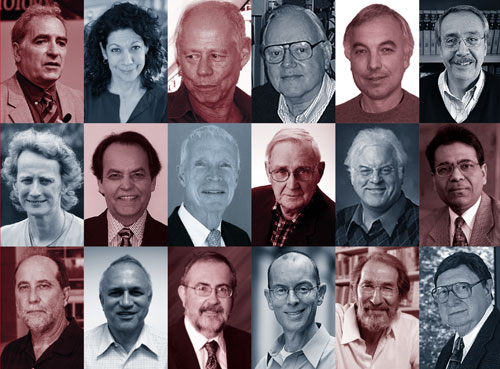
By Michael Bishop
In the 60 years since James Watson and Francis Crick brought physics and biology together to unveil the molecular structure of DNA, the boundary between the two disciplines has continued to become increasingly blurred.
In this post-genomic era, ever more principles from physics have been applied to living systems in an attempt to understand complexity at all levels.
Yet cultural differences still exist between physicists and biologists, as is made clear in a set of excellent perspectives in the journal Physical Biology, published by IOP Publishing, which also publishes Physics World.
In “Perspectives on working at the physics–biology interface”, a group of eminent scientists give their accounts of working at the interface of physics and biology, describing the opportunities that have presented themselves and outlining some of the problems that they continue to face when working across two fields with quite different traditions.
Many of the physicists recall collaborations that have yielded long-lasting friendships and significant scientific advances, yet some are more candid about their experiences of working with biologists.
Robert Austin, a physicist at Princeton University, states that he often uses biologists as a sounding board to test his ideas. If they hate the ideas and tell him not to proceed, he forges ahead.
“The more I am told I am wrong by biologists, the more likely it is that I am on the right track. Being unpopular and eating lunch by yourself is not necessarily a bad thing,” he writes.
Not all of the perspectives are as hard-hitting as that of Austin, but it is clear from reading them that many barriers still need to be broken down between physicists and biologists, specifically with regard to the terminology and language that both use to communicate with each other.
Kamal Shukla, of the National Science Foundation, believes that physicists are making a sincere effort to break down such language barriers, but more must be done on the part of biologists to learn about the principle methodologies in physics.
An example of this two-way communication is detailed in an entertaining perspective jointly written by biologist Bonnie Bassler and physicist Ned Wingreen (both at Princeton), who have been collaborating for more than 15 years after randomly bumping into each other at baggage reclaim in an airport in Mexico City on the way to a conference. The perspectives throw up examples of similarly serendipitous meetings, such as the one described by physicist Herbert Levine, from Rice University, who was reading a biology book to learn more about a micro-organism he was studying when he realized that the book’s author was actually based in the building next to his. They have now been collaborating for almost two decades.
However, Athene Donald, from the University of Cambridge, is one of a number of scientists who believes that these encounters should not be left to chance, and that more needs to be done to bring physics and biology closer together.
“Many physicists see the interface with biology as an exciting place to be. However, not all universities – certainly in the UK – teach much about this to their undergraduates, still focusing on fairly traditional areas of condensed matter,” she writes. “This absence of exposure in the undergraduate curriculum is a serious deficiency in my view.”
So, it seems a lot of work still needs to be done – on the part of researchers as well as their universities and institutions – to ensure that biological physics continues to flourish and scientific advancements on the scale of that of Watson and Crick are repeated.
Other contributors include Nobel laureate Robert Laughlin of Stanford University and Geoffrey West of the Santa Fe Institute, who are both theoretical physicists with a broad range of biological interests.



